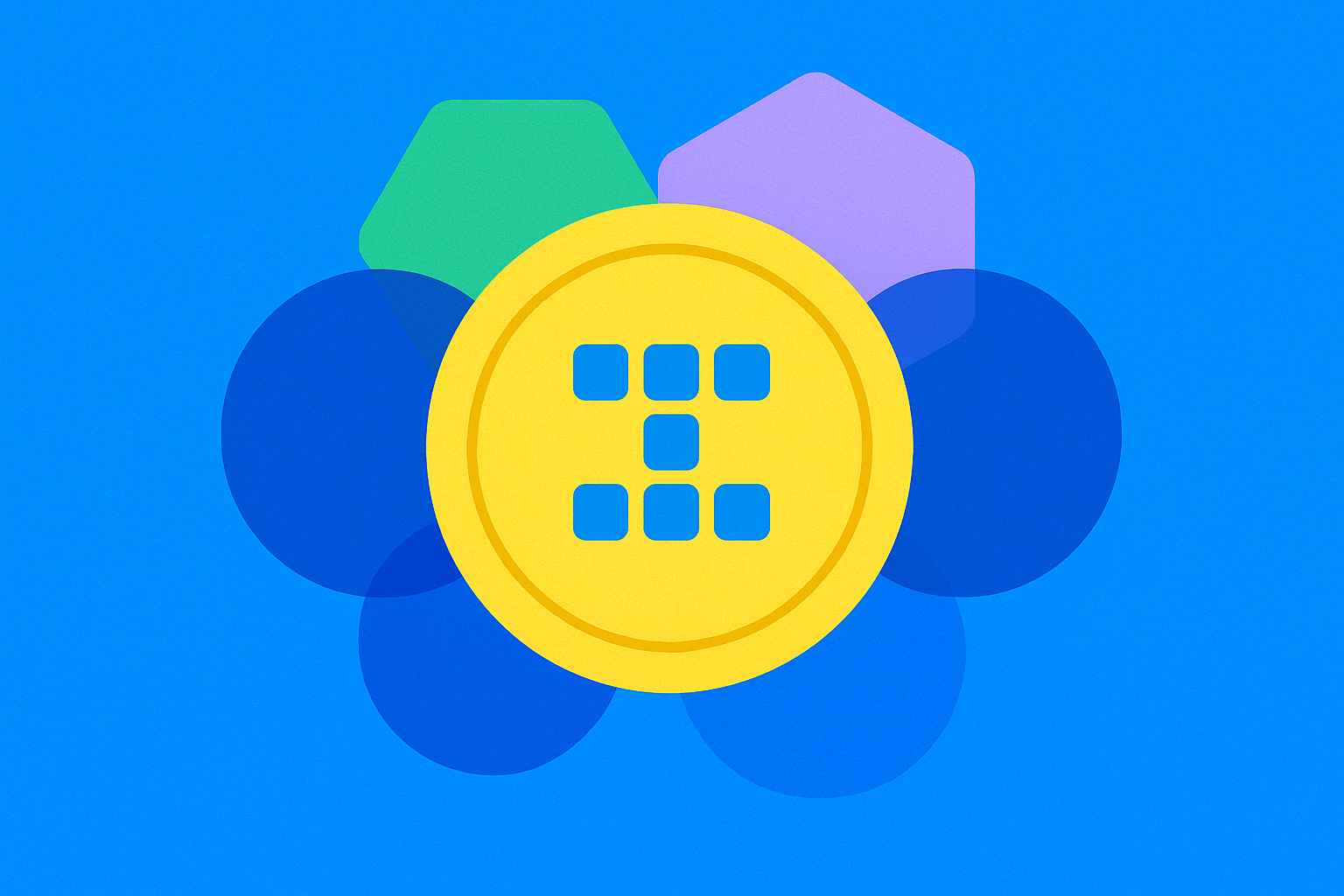INK nedir: İçerik üretimini dönüştüren yapay zekâ destekli yazma aracı

Ink'in Konumlandırılması ve Önemi
Ink (INK), 2017 yılında, farklı kültürel alanlardaki orijinal içerik sektöründeki zorluklara çözüm sunmak amacıyla piyasaya sürüldü. Egemen ittifak zincirleri, güvenilir halka açık zincirler ve zincirler arası bağlantıdan oluşan merkeziyetsiz yapısıyla Ink, içerik ve kültürel varlık alanlarında kilit bir oyuncu olarak öne çıkıyor.
2025 itibarıyla Ink, blokzincir tabanlı içerik sektöründe vazgeçilmez bir konum edinmiştir; piyasa değeri $284.516, dolaşımdaki arzı ise 463.910.527 INK token’dır. Bu yazıda Ink’in teknik mimarisi, piyasa performansı ve gelecekteki potansiyeli ele alınacaktır.
Kökeni ve Gelişim Süreci
Oluşum Arka Planı
Ink, 2017’de, içerik endüstrisindeki sorunlara merkeziyetsiz bir altyapı sunmak ve belirli kültürel çevrelerin ihtiyaçlarını karşılamak için geliştirildi. Blokzincir teknolojisinin yükselişi döneminde doğan Ink, içerik üretimi, dağıtımı ve gelir elde etme süreçlerini blokzincirle dönüştürmeyi amaçladı.
Ink'in piyasaya çıkışı; içerik üreticileri, sanatçılar ve kültürel varlık sektörü için yepyeni olanaklar yarattı.
Başlıca Kilometre Taşları
- 2017: Proje başlatıldı, belirli kültürel çevreler için egemen ittifak zinciri konsepti sunuldu.
- 2017: Token satışı gerçekleşti; INK token’ları içerik ekosistemine (%15), topluluk inşasına (%15), token çıkarımına (%50) ve kurucu ekip ile erken katkı sağlayanlara (%20) dağıtıldı.
- 2017: 19 Aralık’ta, $0,94183 ile tüm zamanların en yüksek fiyatına ulaştı.
- 2022: 14 Mayıs’ta, $0,00021265 ile en düşük seviyesini gördü.
Ink Labs Foundation’ın desteğiyle Ink, içerik sektöründe teknolojisini, güvenliğini ve gerçek dünya uygulamalarını sürekli iyileştirmektedir.
Ink Nasıl Çalışır?
Merkeziyetsiz Kontrol
Ink, küresel ölçekte bilgisayarların (node’ların) oluşturduğu merkeziyetsiz bir ağ üzerinde çalışır ve hiçbir merkezi otorite tarafından yönetilmez. Bu node’lar, işlemleri doğrulamak için birlikte çalışır; şeffaflık ve saldırılara karşı direnç sağlanır, kullanıcılar daha fazla bağımsızlık elde eder, ağın dayanıklılığı yükselir.
Blokzincir Temeli
Ink’in blokzinciri, tüm işlemlerin kaydını tutan halka açık ve değiştirilemez bir dijital defterdir. İşlemler bloklar halinde gruplandırılır ve kriptografik hash’lerle birbirine bağlanarak güvenli bir zincir oluşturulur. Herkes bu kayıtları inceleyebilir; böylece aracı olmadan güven tesis edilir.
Ink’in benzersiz yaklaşımı, belirli kültürel çevreler için egemen ittifak zincirlerini ve Qtum blokzinciri tabanlı kültürel varlık alım-satım platformunu kapsamaktadır.
Adaletin Sağlanması
Ink, işlemleri doğrulamak ve çift harcama gibi sahtecilikleri önlemek için bir konsensüs mekanizması kullanır. Katılımcılar; node çalıştırma veya stake etme gibi faaliyetlerle ağın güvenliğini sağlar, karşılığında INK token ile ödüllendirilir.
Yenilikçi özellikleri arasında egemen ittifak zincirleri ve zincirler arası etkileşim protokolleri yer alır.
Güvenli İşlemler
Ink, işlemleri güvence altına almak için açık anahtarlı kriptografi kullanır:
- Özel anahtarlar (gizli şifre gibi) ile işlemler imzalanır
- Açık anahtarlar (hesap numarası gibi) ile sahiplik doğrulanır
Bu yapı, fonların güvenliğini sağlarken işlemlerin gizliliğini de korur. Ayrıca Ink’in zincirler arası etkileşim protokolü, zincirler arasında güvenli varlık transferini mümkün kılarak ekosistemin birlikte çalışabilirliğini artırır.
INK'nin Piyasa Performansı
Dolaşımın Genel Görünümü
31 Ekim 2025 tarihi itibarıyla INK’nin dolaşımdaki arzı 463.910.527 token ve toplam arzı 1.000.000.000 token’dır.
Yeni token’lar token çıkarımı ile piyasaya sürülerek arz ve talep dengesini etkiler.
Token dağılımı: içerik ekosistemi için %15, topluluk inşası için %15, token çıkarımı için %50, kurucu ekip ve erken katkı sağlayanlar için %20.
Fiyat Dalgalanmaları
INK, 19 Aralık 2017’de genel kripto para piyasasının yükselişiyle $0,94183 ile zirve yaptı.
En düşük fiyatı ise 14 Mayıs 2022’de $0,00021265 olarak kaydedildi; bu durum piyasa genelindeki düşüşe bağlanmaktadır.
Bu dalgalanma, piyasa duyarlılığını, benimseme eğilimlerini ve dışsal faktörleri ortaya koyar.
INK’nin güncel piyasa fiyatını görmek için tıklayın

Zincir Üzeri Metrikler
- Günlük İşlem Hacmi: $9.975,44 (ağ etkinliğini gösterir)
- Aktif Adresler: 99.135 (kullanıcı katılımını yansıtır)
INK Ekosistemi: Uygulamalar ve Ortaklıklar
Temel Kullanım Alanları
INK ekosistemi çeşitli uygulamalara olanak tanır:
- İçerik Sektörü: Belirli kültürel çevreler için egemen ittifak zinciri, içerik uygulamaları için merkeziyetsiz altyapı sağlar.
- Kültürel Varlık Ticareti: Qtum tabanında IP varlıkların menkulleştirilmesi ve alım-satımı için platform.
Stratejik Ortaklıklar
INK, Qtum ile yaptığı iş birliği sayesinde teknik kapasitesini ve piyasa etkisini artırmıştır. Bu ortaklık, INK ekosisteminin genişlemesi için sağlam bir zemin oluşturur.
Tartışmalar ve Zorluklar
INK şu temel zorluklarla karşı karşıya:
- Teknik Sorunlar: Zincirler arası çalışabilirlik ve ölçeklenebilirlik
- Düzenleyici Riskler: Tokenlaştırılmış kültürel varlıklara yönelik olası denetimler
- Rekabet Baskısı: İçerik sektöründe diğer blokzincir platformlarının yükselişi
Bu başlıklar, topluluk ve piyasa içinde tartışmalara yol açarak INK’nin yenilikçi gelişimini teşvik etmektedir.
INK Topluluğu ve Sosyal Medya Ortamı
Topluluk Coşkusu
INK topluluğu, 31 Ekim 2025 itibarıyla 99.135 sahip ile etkinliğini göstermektedir. X platformunda INK ile ilgili paylaşımlar ve etiketler zaman zaman ilgi çekmektedir. Kültürel varlık alım-satım platformundaki yeni gelişmeler topluluk heyecanını artırmaktadır.
Sosyal Medya Eğilimleri
X platformundaki eğilimler çeşitlilik göstermektedir:
- Destekçiler, INK’nin içerik sektörü için eşsiz blokzincir çözümlerini övgüyle karşılıyor.
- Eleştirmenler, fiyat oynaklığı ve benimsenme zorluklarına odaklanıyor.
Son gelişmeler, piyasa dalgalanması ortamında temkinli bir iyimserliği işaret etmektedir.
Gündem Konuları
X kullanıcıları, INK’nin zincirler arası etkileşim protokolü ve kültürel varlık tokenlaştırması üzerine tartışıyor; bu, dönüştürücü potansiyelini ve ana akımda benimsenme zorluklarını ortaya koyuyor.
INK Hakkında Daha Fazla Bilgi Kaynakları
- Resmi Web Sitesi: Özellikler, kullanım alanları ve güncel gelişmeler için INK’nin resmi sitesini ziyaret edebilirsiniz.
- X Güncellemeleri: X platformunda INK, @inklabsfound hesabı üzerinden teknoloji güncellemeleri, topluluk etkinlikleri ve ortaklık haberleri paylaşıyor.
INK’nin Gelecek Yol Haritası
- Ekosistem Hedefleri: Egemen ittifak zinciri kullanımını farklı kültürel çevrelerde yaygınlaştırmak
- Uzun Vadeli Vizyon: Tokenlaştırılmış kültürel varlıklar ve içerik sektörü blokzincir çözümleri için lider platform olmak
INK’ye Nasıl Katılabilirsiniz?
- Satın Alma Kanalları: INK’yi Gate.com üzerinden edinebilirsiniz
- Depolama Çözümleri: Qtum blokzinciriyle uyumlu güvenli cüzdanlar kullanın
- Ekosistem Katılımı: INK’nin egemen ittifak zincirinde içerik uygulamaları geliştirin
- Topluluk Etkileşimi: INK’nin sosyal medya hesaplarını takip ederek güncellemeleri ve katılım fırsatlarını değerlendirin
Özet
INK, blokzincir teknolojisiyle içerik sektörünü yeniden tanımlıyor ve kültürel içerik ile varlık alım-satımı için merkeziyetsiz altyapı sağlıyor. Egemen ittifak zincirleri ve kültürel varlık tokenlaştırmadaki özgün yaklaşımıyla kripto para dünyasında kendine has bir konumda. Benimseme ve piyasa oynaklığındaki zorluklara rağmen, INK’nin yenilikçi vizyonu ve belirgin yol haritası, onu merkeziyetsiz içerik çözümlerinin geleceğinde dikkat çekici bir oyuncu haline getiriyor. Sektöre yeni giren ya da deneyimli bir yatırımcı olun, INK’yi takip etmek ve ekosisteme katılmak akılcı bir seçenek olabilir.
Sıkça Sorulan Sorular
Mürekkep neyden yapılır?
Mürekkep; boya veya pigment, çözücü ve katkı maddelerinden oluşur. Taşıyıcı; sıvı, macun veya katı formda olup yazı ve baskı işlemlerinde kullanılır.
Siyah mürekkep neyden yapılır?
Siyah mürekkep, petrokimyasallar veya kömürden elde edilen karbon siyahı ile, balmumu ve kurutucu katkı maddeleri içerir.
Bilimde mürekkep nedir?
Mürekkep, yazı, baskı ve çizim için kullanılan; renklendirici, çözücü ve bağlayıcı içeren bir sıvı veya macundur. Farklı yüzeylere renk aktarır.
Mürekkebin üç ana bileşeni nedir?
Mürekkebin üç temel bileşeni; renk veren pigmentler, stabilite sağlayan bağlayıcılar ve akışkanlığı düzenleyen çözücülerdir.

CAPS nedir: Merkezi İşitsel İşleme Sisteminin Anlaşılması

Dijital Çağda Etkili İletişimin Sanatını Çözümlemek: TALK Nedir?

TALK nedir: İletişim becerilerini geliştirmede devrim yaratan bir yaklaşım

Bölüm Başkanı Kimdir: Kuruluşlarda Bölüm Başkanının Görev ve Sorumluluklarını Anlama

SANTOS nedir: Uzay keşfini kökten değiştiren devrim niteliğinde bir Yapay Zekâ sistemi

Bilgisayar Makineleri Derneği (ACM) Nedir: The Association for Computing Machinery Hakkında Açıklama

Güvenli bir kripto para cüzdanı seçme rehberi

DXN satın alma ve güvenli biçimde saklama yöntemleri

SIS Nedir: Modern eğitimde Öğrenci Bilgi Sistemlerine yönelik kapsamlı bir rehber

HLN nedir: Headline News Network Hakkında Kapsamlı Bir Rehber ve Modern Medyadaki Rolü

TRON (TRX) Kolay ve Güvenli Bir Şekilde Nasıl Satın Alınır







